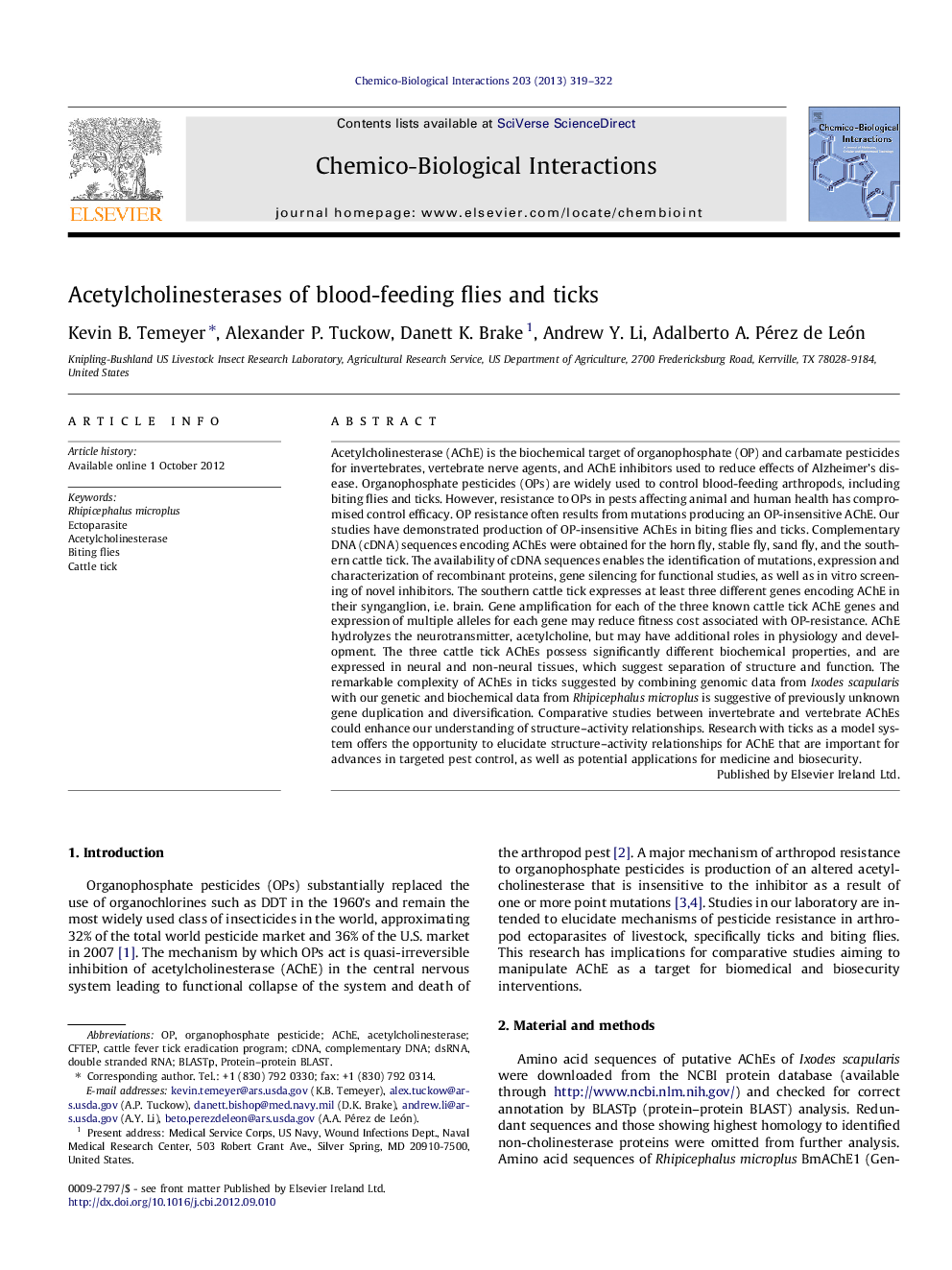| کد مقاله | کد نشریه | سال انتشار | مقاله انگلیسی | نسخه تمام متن |
|---|---|---|---|---|
| 5848396 | 1130154 | 2013 | 4 صفحه PDF | دانلود رایگان |
Acetylcholinesterase (AChE) is the biochemical target of organophosphate (OP) and carbamate pesticides for invertebrates, vertebrate nerve agents, and AChE inhibitors used to reduce effects of Alzheimer's disease. Organophosphate pesticides (OPs) are widely used to control blood-feeding arthropods, including biting flies and ticks. However, resistance to OPs in pests affecting animal and human health has compromised control efficacy. OP resistance often results from mutations producing an OP-insensitive AChE. Our studies have demonstrated production of OP-insensitive AChEs in biting flies and ticks. Complementary DNA (cDNA) sequences encoding AChEs were obtained for the horn fly, stable fly, sand fly, and the southern cattle tick. The availability of cDNA sequences enables the identification of mutations, expression and characterization of recombinant proteins, gene silencing for functional studies, as well as in vitro screening of novel inhibitors. The southern cattle tick expresses at least three different genes encoding AChE in their synganglion, i.e. brain. Gene amplification for each of the three known cattle tick AChE genes and expression of multiple alleles for each gene may reduce fitness cost associated with OP-resistance. AChE hydrolyzes the neurotransmitter, acetylcholine, but may have additional roles in physiology and development. The three cattle tick AChEs possess significantly different biochemical properties, and are expressed in neural and non-neural tissues, which suggest separation of structure and function. The remarkable complexity of AChEs in ticks suggested by combining genomic data from Ixodes scapularis with our genetic and biochemical data from Rhipicephalus microplus is suggestive of previously unknown gene duplication and diversification. Comparative studies between invertebrate and vertebrate AChEs could enhance our understanding of structure-activity relationships. Research with ticks as a model system offers the opportunity to elucidate structure-activity relationships for AChE that are important for advances in targeted pest control, as well as potential applications for medicine and biosecurity.
⺠Multiple amplified AChE genes hypothesized to reduce fitness cost of mutations. ⺠Diversity of tick AChEs - likely separation of structure/function. ⺠Invertebrate models for comparative elucidation of structure-activity relationships. ⺠Novel inhibitors identified with improved target specificity for invertebrate AChE.
Journal: Chemico-Biological Interactions - Volume 203, Issue 1, 25 March 2013, Pages 319-322
